The Esquire-class Microfrigate
In July, 2017, the U.S. Navy released an RFI seeking conceptual designs for a small surface combatant, the future Guided Missile Frigate, FFG(X). The ship's primary role would be to provide support/relief to larger combatants during conflict and operations other than war, and to augment battlespace awareness ("extend the tactical grid") by establishing independent sensor networks in high threat areas utilizing both onboard and unmanned systems. In February, 2018, the Navy narrowed the design field to five contenders - Austal, Fincanteri, General Dynamics, Lockheed Martin, and Huntington Ingalls - with an RFP expected sometime in 2019 and contract award in 2020.
While the need for a new surface combatant is open to debate, we can be certain that threats to our naval forces will continue to evolve and proliferate. We can also be certain that these threats will be increasingly unmanned and autonomous, requiring innovative and potentially disruptive countermeasures in order to defeat them. The U.S. Navy must remain well ahead of the curve as potential adversaries acquire ever-smaller and potent weapons and weaponized unmanned systems.
Thus, as the Navy moves forward with plans for a new guided missile frigate, we believe there is also a need for a first generation unmanned, autonomous microfrigate whose role it is to augment sea control and maritime security operations by enhancing battlespace awareness and, when necessary, joining the fight, with a particular emphasis on engaging and defeating the growing array of unmanned, autonomous micro-threats clouding the battlespace.
Microfrigates could be produced in far greater numbers, at a faster rate, and at a markedly lower cost than FFG(X).
-
The proposed FFG(X) procurement profile currently calls for a single hull in 2020 and 2021, and two per year during the following nine years, each at a price of $950 million.
-
At an estimated price tag of $50 million per hull, approximately 20 Esquires could be constructed for the cost of a single FFG(X). This is, of course, only a fraction of the total cost savings, as each FFG(X) will also incur substantial manpower, fuel, maintenance, and other operating costs during its life cycle.
A networked flotilla of autonomous microfrigates would greatly reduce the demands upon, and the threat to, high end manned combatants.
-
With its fully integrated UAV and UUV payloads, the Esquire-class is an ideal platform to augment ASW, MCM, EMW and ISR operations, providing wide operating coverage and extending the tactical grid well beyond the horizon.
-
As a semi-autonomous, unmanned platform, microfrigates can operate in high-threat areas without risking human lives.
-
While there are uncertainties and potential dangers surrounding autonomy in weapons systems, these must be weighed against the growing threat posed by peer competitor navies, and even the growing naval power of regional actors, rogue states, and nonstate organizations.
In addition to providing sensor augmentation, the microfrigate is also a fighting ship, fully capable of conducting air defense, undersea warfare, surface warfare, and strike warfare against current and emerging micro threats.
-
The technologies necessary to develop robust micro air and sea combatants are cheap and readily available, enabling not only near-peer competitors, but smaller, cash-strapped players to fashion their own potent micronaval capability.
-
The Esquire's arsenal of vertically-launched nanomissiles and swarming UAVs, as well as self-guided nanoprojectiles and directed energy weapons can engage both surface and air targets at close-in or standoff ranges.
-
Microtorpedos can engage an array of undersea threats, including unmanned vehicles, enemy torpedos, mines, and seabed infrastructure.
-
Stern-launched Strikepods of Atom-class microsubmarines can conduct a range of offensive operations, such as electonic warfare and mining, engage enemy surface and undersea vehicles, or target undersea infrastructure.
A Vessel Whose Time Has Come
With the prospect of great power conflict returning to the fore, along with a renewed emphasis on sea control, and with this occuring at a time of increasingly strained defense budgets, the U.S. Navy should strongly consider procuring an unmanned microfrigate as an effective, low-cost force multiplier to offset the growing naval power of our adversaries.
We therefore submit for the Navy's consideration, the Esquire-class Microfrigate.
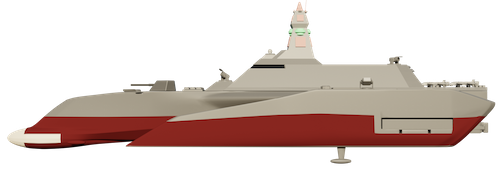
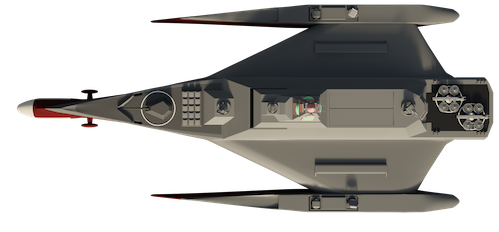
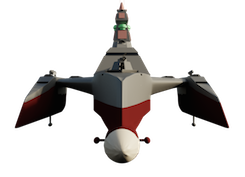
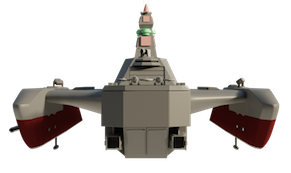
Stats:
Length: 15.5 meters (51 ft)
Beam: 5 meters (16.5 ft)
Height: 3.5 meters (Above the water line)
Displacement: 30 - 35 tons (Load dependent)
Draft: 1.5 - 2 meters (5 - 6.5 ft)
Speed: 40+ kts
Range: 1000 nm
Power and Propulsion
A 600-hp turbo microdiesel engine powers dual axial-flow micro waterjets providing precision maneuvering and efficient, high-powered thrust, propelling the Esquire-class at speeds in excess of 40 kts. (The Block II Esquire is slated to feature a Low Energy Nuclear Reactor (LENR) similar to the microreactor found in the Atom-class microsubmarine, which will provide higher energy output, as well as unlimited range and endurance.)
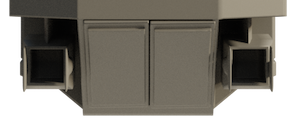
The microdiesel also powers a cutting edge 175 kW microturbine to provide power to shipboard systems.
Sensors & Communications
The Esquire-class is equipped with a wide range of cutting-edge electomagnetic and acoustic sensors, providing unmatched battlespace awareness above, on, and below the sea.
- AN/SPY-1m MicroAegis Integrated Combat System
- 2 AN/SLQ-m Electronic Warfare Antennae
- 2 AN/SPG-m Fire Control Radar
- AN/SPS-67-m Surface Search and Navigation Radar
- AN/SQR-m Multi Function Towed Sonar Array
- AN/SQS-m Bow Sonar Array
- AN/SLQ-m Electronic Warfare Suite
- UHF/VHF/SATCOM Antennae
- High definition video

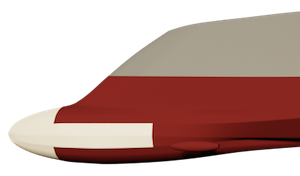
Weapons & Countermeasures
-
The Mark 45 Mod M 2.5 inch deck gun provides surface, air, and land attack capabilities against small and soft targets using both guided and unguided nanomunitions.

-
Three High Energy Intercept/Disrupt (HENID) turrets provide directed energy AAW fires to disrupt and/or destroy incoming airborne threats. While HENID is intended as a close-in weapons system (CIWS), its effective range is 2 km, or 1 nautical mile.
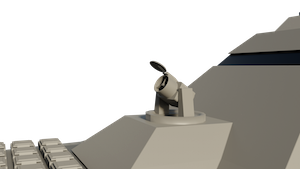
-
Two integrated microtorpedo "drawer" launchers are located in each outrigger, just below the water line, and provide a total armament of twelve Firesquid microtorpedos for offensive use against unmanned underwater vehicles, and defense as an anti-torpedo torpedo (ATT).

-
Vertical Launch Systems - The Esquire-class is equipped with a Mark-41m vertical launch system (15 cells forward and, depending on mission configuration, either 15 or 40 aft), which is capable of launching an array of projectiles for both kinetic and nonkinetic effects, including surface-to-air and surface-to-surface nanomissiles, and swarming AUVs.
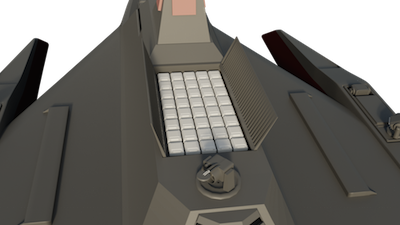
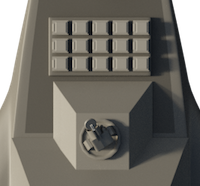
-
The MQ-100 Foxhawk is a fixed-wing, turbofan powered UAV that is launched from a vertical launch system cell. Prior to launch, the wings are in the folded position, and upon ejection, unfold immediately prior to engine ignition.



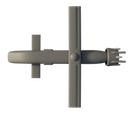
Specifications
Length: 1 meter (3.3 ft)
Wingspan: .75 meters (2.5 ft)
Weight: 125 lbs
Max Speed: 80 kph
Cruising Speed: 45 kph
Range: 100 nm
Endurance: 10 hours
Ceiling: 4600 m
Warhead: Shaped charge -
Two sets of dual Offboard Nanodecoy Countermeasures (NANOC) launchers located on each outrigger provide terminal defense against radar guided and infrared homing projectiles.
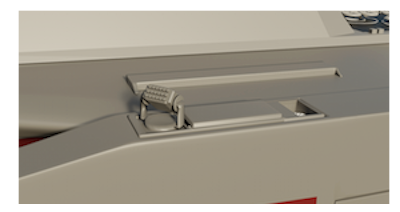
Atom-class Integration
The Esquire features a fully integrated microsubmarine bay providing launch/recovery of twelve Atom-class microsubmarines for Strikepod deployment.
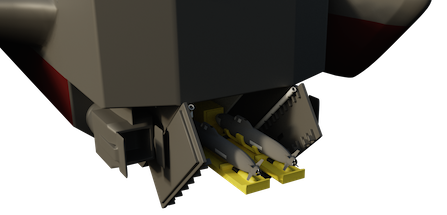
Microsubmarines are launched and recovered via a hatch located in the stern.
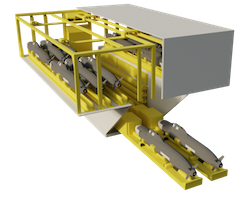
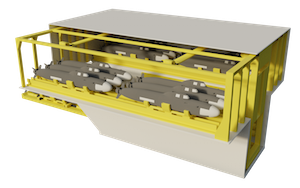
Recovery is aided by an innovative undersea navigation system that utilizes four pods broadcasting at different frequencies to guide returning microsubmarines into the hangar bay.

Fight Deck and UAV Hangar
At 2.8 square meters (30 sq ft), the flight deck of the Esquire-class can accommodate a range of small or medium rotary wing UAVs, but is primarily optimized for the RQ-80 Sibyl VTOL UAV.
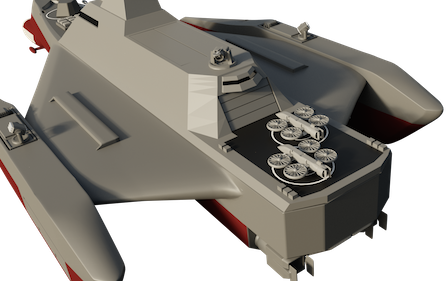
The Esquire-class can accommodate two Sibyls on its flight deck, and two within the permanent hangar bay, or can be configured with SIBMOD, a hangar module providing stowage of up to four additional Sibyls.
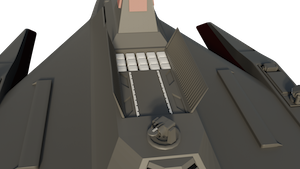
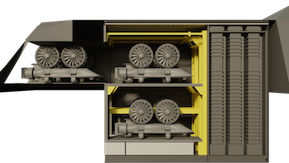
The Sibyl's innovative ground propulsion system consists of a set of four trackballs which enable omnidirectional maneuvering when entering or exiting the UAV hangar.
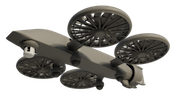
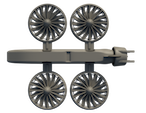


Specifications
Length: 1 meter (3.3 ft)
Width: .75 meters (2.5 ft)
Weight: 100 lbs
Max Speed: 50 kph
Cruising Speed: 33 kph
Range: 100 nm
Endurance: 4.5 hours
Ceiling: 4600 m
The Sibyl is equipped with a range of sophisticated sensors and avionics, including a multi-spectral targeting system, magnetic anomoly detector, and an AN/APY-m Lynx II radar, and is powered by a revolutionary hybrid fuel-electric system providing high energy density for over four hours of operational flight.
[End]
Strikepod Command

